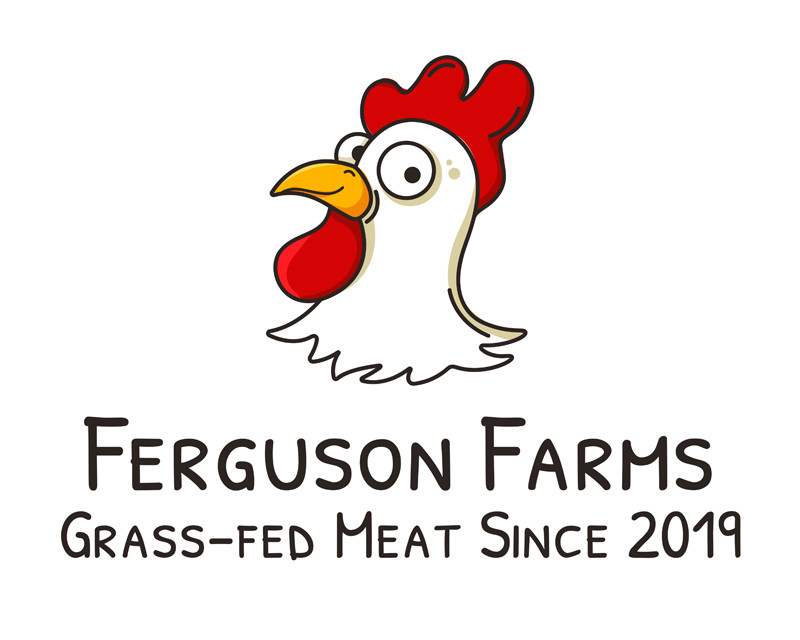5 Tailgate Grilling Tips for a Winning Game Day
posted on
September 13, 2024
5 Tailgate Grilling Tips for a Winning Game Day | Ferguson Farms
5 Tailgate Grilling Tips for a Winning Game Day
Tailgating has become a cherished tradition that brings together friends, family, and fans for a day of fun, food, and football. But for those manning the grill, there's always a bit of pressure to serve up mouth-watering, perfectly cooked dishes that impress everyone at the party. Whether you're grilling juicy burgers, sizzling brats, or tender steaks, the key to a successful tailgate is not just the quality of the meat but also how you grill it.
In this blog, we’ll share 5 essential grilling tips to help you master your game-day tailgate and ensure that your food is the real MVP. If you’re looking to stock up on premium grass-fed meats and grab tailgate-ready recipes, be sure to check out Ferguson Farms’ 2024 Grass-Fed Tailgate Event for everything you need to elevate your grilling experience.
1. Preheat Your Grill for the Perfect Sear
One of the most common mistakes tailgaters make is starting to grill before the grill has been properly preheated. Preheating your grill is the first step to achieving a delicious, even sear on your meats, and it helps ensure your food cooks evenly throughout. Whether you’re using a gas or charcoal grill, the key is to get it hot enough to sear the outside of the meat while keeping the inside juicy and tender.
Why Preheating is Crucial:
- Better Flavor: A hot grill helps to caramelize the surface of the meat, enhancing the flavor.
- Even Cooking: Preheating ensures the entire cooking surface is evenly heated, so there are no hot or cold spots that could lead to uneven cooking.
- Improved Grill Marks: If you love those perfect grill marks on your burgers or steaks, preheating the grill is essential.
Once your grill reaches the desired temperature, you’ll be ready to add your premium cuts like the Grass-Fed Ribeye or Old-Fashioned Beef Hot Dogs from Ferguson Farms. If you’re looking for more grilling inspiration, check out our Ultimate Tailgate Box to get everything you need for a tailgate feast.

2. Use a Meat Thermometer for Accuracy
Another important tool for tailgate grilling success is a meat thermometer. While it’s tempting to "eyeball" your meats on the grill, the best way to ensure perfect doneness and safety is by using a meat thermometer. This is especially important for cuts like chicken or sausages, where undercooking could be dangerous, but overcooking will leave them dry and tough.
Meat Temperature Guide:
- Chicken: 165°F (74°C)
- Beef Steaks (Medium-Rare): 130°F (54°C)
- Burgers: 160°F (71°C)
- Bratwurst: 160°F (71°C)
By using a meat thermometer, you’ll take the guesswork out of grilling and ensure each cut is perfectly cooked. Whether you're grilling up Homemade Smash Burgers or sizzling Wisconsin Beer Brats, this tip will help you deliver consistently delicious results.
3. Don’t Overcrowd the Grill
It’s game day, and you’ve got a big crowd to feed—but don’t be tempted to fill every inch of the grill at once. Overcrowding the grill not only makes it harder for the heat to circulate evenly but also increases the risk of flare-ups from fats dripping into the flames. Instead, leave enough space between each piece of meat to allow air circulation and proper grilling.
Why Space Matters:
- Even Heat Distribution: By giving your meats space, you ensure that each piece is exposed to the same amount of heat for even cooking.
- Crispier, Juicier Meat: Overcrowding can cause steaming rather than grilling, which can make your meats soggy instead of crispy on the outside.
For example, if you’re grilling Grilled Bison Burgers or Skirt Steak Fajitas, space them out for that perfect sear and tender, juicy finish.
If you’re grilling for a larger group, consider using a two-zone setup on your grill. Keep one side for direct heat (high temperature for searing) and another side for indirect heat (lower temperature for finishing the cooking process).
4. Let the Meat Rest Before Serving
It might be tempting to dig into that perfectly grilled steak or burger the moment it’s off the grill, but letting your meats rest is one of the most important steps for preserving their flavor and juiciness. Resting allows the juices to redistribute throughout the meat, keeping each bite tender and flavorful.
How Long to Rest Meat:
- Steaks: 5-10 minutes
- Burgers: 3-5 minutes
- Chicken or Pork: 5-10 minutes
Resting your meats, like Beer Can Chicken or Ribeye Steaks, ensures that the juices don’t escape when you cut into them. Simply cover the meat loosely with foil and let it sit before serving to your tailgate guests.
5. Choose Quality Grass-Fed Meats for Maximum Flavor
You can follow all the best grilling tips, but the true key to a successful tailgate is starting with high-quality meat. Grass-fed meats are the ultimate choice for grilling because they offer superior flavor, tenderness, and nutritional benefits. Unlike conventional grain-fed meats, grass-fed beef and bison are leaner and packed with healthy omega-3 fatty acids, antioxidants, and vitamins.
Why Grass-Fed?
- Flavor: Grass-fed beef and bison have a richer, more complex flavor compared to grain-fed counterparts.
- Health: Grass-fed meats contain higher levels of omega-3s, CLA (Conjugated Linoleic Acid), and are free from hormones and antibiotics.
- Sustainability: Grass-fed farming is better for the environment, promoting healthier ecosystems and more humane practices.

Ferguson Farms offers a variety of grass-fed meats that are perfect for tailgate grilling. Our Ultimate Tailgate Box is packed with everything from hot dogs and brats to premium steaks, making it the perfect option for your next game day.
Explore more tailgate-ready meats and recipes at our Ultimate Grass-Fed Tailgate Experience to ensure your tailgate is a hit.
Bonus Tip: Grill with the Right Tools
Aside from your grill and meat thermometer, having the right grilling tools can make all the difference in your tailgate cooking experience. Here are some must-have tools for game day:
- Tongs: Invest in a good pair of long-handled tongs for flipping burgers, brats, and steaks without burning yourself.
- Grill Brush: A quality grill brush is essential for keeping your grill clean and ensuring even heat distribution.
- Foil: Foil can be a lifesaver when grilling vegetables or for wrapping meats like ribs to slow-cook on the grill.
By equipping yourself with these tools and following our grilling tips, you’ll be ready to grill like a pro at your next tailgate.
Conclusion: Score a Touchdown with Grass-Fed Meats
With these five tailgate grilling tips, you’re well on your way to serving up the best game-day food your crowd has ever tasted. Whether you're grilling Wisconsin Beer Brats, Smash Burgers, or juicy steaks from our Ultimate Tailgate Box, following these tips will guarantee that your food is perfectly cooked and bursting with flavor.
Remember, the best tailgates start with the best ingredients. Ferguson Farms offers a range of grass-fed meats that will make your tailgate stand out. Explore our full collection of meats and recipes at the Ultimate Grass-Fed Tailgate Experience to make your next tailgate one for the books.




